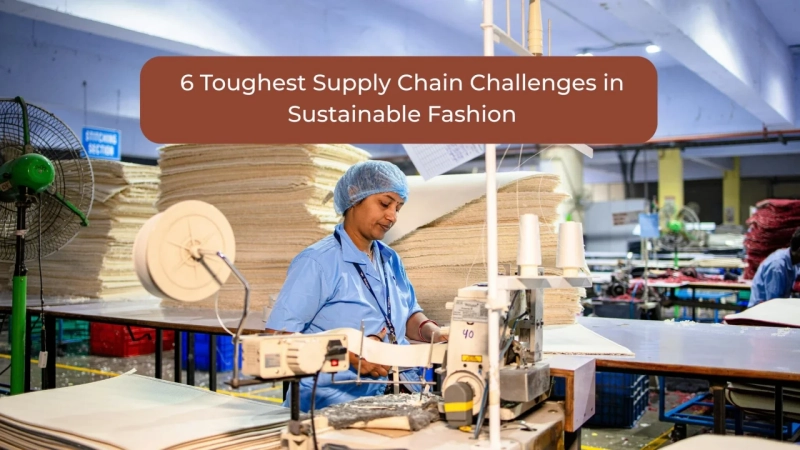Sustainability in the fashion and textile industry is more important than ever. However, building a truly Sustainable Fashion supply chain comes with significant challenges. From sourcing eco-friendly materials to ensuring ethical production, fashion brands must navigate multiple obstacles to achieve sustainability. Here are six key supply chain challenges in the sustainable fashion and textile industry
What is sustainable supply chain ?
A Sustainable Fashion supply chain means making products in a way that is good for the environment, fair to workers, and profitable for businesses. It covers everything from getting raw materials to making, shipping, and disposing of products. This approach helps reduce waste, cut carbon emissions, ensure fair wages, and keep businesses strong for the future. By choosing sustainable practices, companies also build trust with customers who care about ethical and eco-friendly products.
Achieving sustainability in the fashion and textile industry’s supply chain involves addressing several significant challenges:
Increased Costs
Implementing sustainable practices often requires substantial upfront investment, which can be particularly challenging for smaller companies. These costs may lead to higher product prices, making it difficult to justify to customers who may not fully understand the value of sustainability. Balancing affordability with ethical production remains a critical concern.
Procurement of Sustainable Raw Materials
Finding eco-friendly materials can be challenging because they are often harder to get and more expensive. It’s also important to make sure suppliers follow sustainable standards, which adds to the difficulty. For example, creating an organic khadi fabric collection means sourcing certified organic cotton and ensuring it is spun and woven in a way that meets strict sustainability rules.
Complexity in Monitoring Supply Chains
Supply chains are complex and deeply connected, making it hard to track sustainability efforts. Even small changes can have a big impact, making transparency and accountability difficult. A report shows that only 19% of fashion companies truly know what’s happening in their supply chain—and even they don’t have the full picture. What do you think—should brands be more open about where and how their products are made?
Misalignment in Sustainability Frameworks
If company leaders don’t fully support sustainability, it’s hard to make real changes. Everyone in the supply chain needs to work together to make eco-friendly practices successful. Businesses that focus on sustainability and efficiency gain more in the long run especially since people prefer products that use less energy and can be recycled. Do you think companies should do more to make their supply chains greener?
Eco-Friendly Logistics
Establishing environmentally friendly logistics systems is a significant hurdle. Developing transportation methods that reduce carbon emissions and energy consumption is crucial for a sustainable supply chain but often requires innovative solutions and investments.
Extended Lead Times
Sustainable processes, especially those involving artisanal and handmade methods, may result in longer lead times. Standardizing these processes and managing client expectations are essential to integrate sustainability without compromising efficiency. Building long-term, trustful relationships with artisans and collaborating with clients who understand the nuances of the sustainable industry can help mitigate this challenge.
Addressing these challenges requires a comprehensive approach, including responsible sourcing, transparent operations, management commitment, eco-friendly logistics, and effective communication with stakeholders. By tackling these issues head-on, the fashion and textile industry can move closer to achieving genuine sustainability.
Conclusion
Sustainability in fashion isn’t just about using eco-friendly fabrics—it’s about overcoming challenges in fabric sourcing, pricing, selling, and logistics. At ATELANGE, we continue to face these struggles but remain committed to creating sustainable fashion that is ethical, stylish, and accessible. Overcoming these hurdles requires industry collaboration, customer awareness, and continuous innovation.
What are your thoughts on sustainable fashion challenges? Let’s discuss!
follow our brand – @atelange_official



